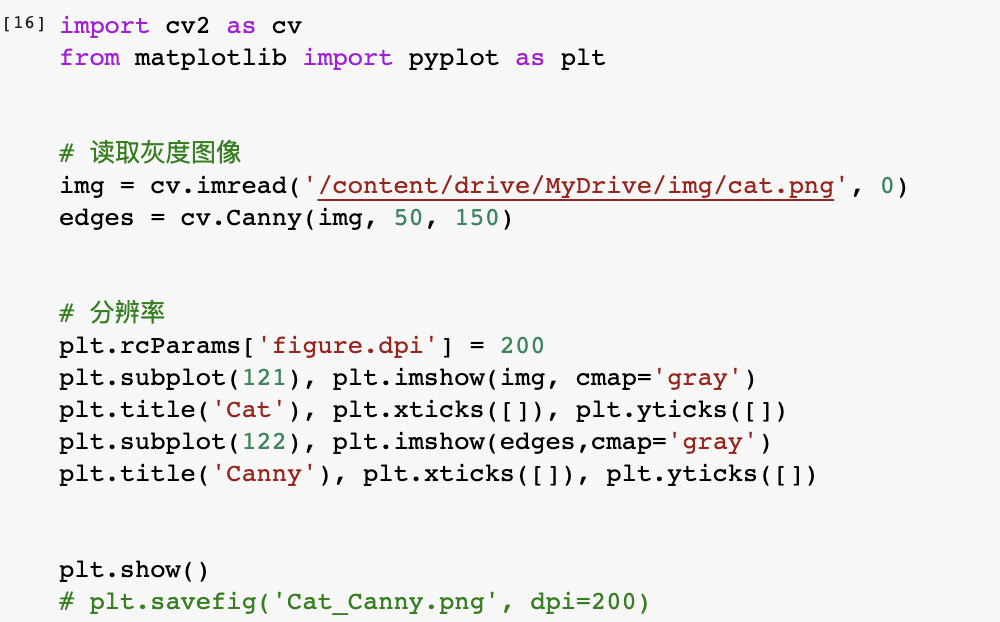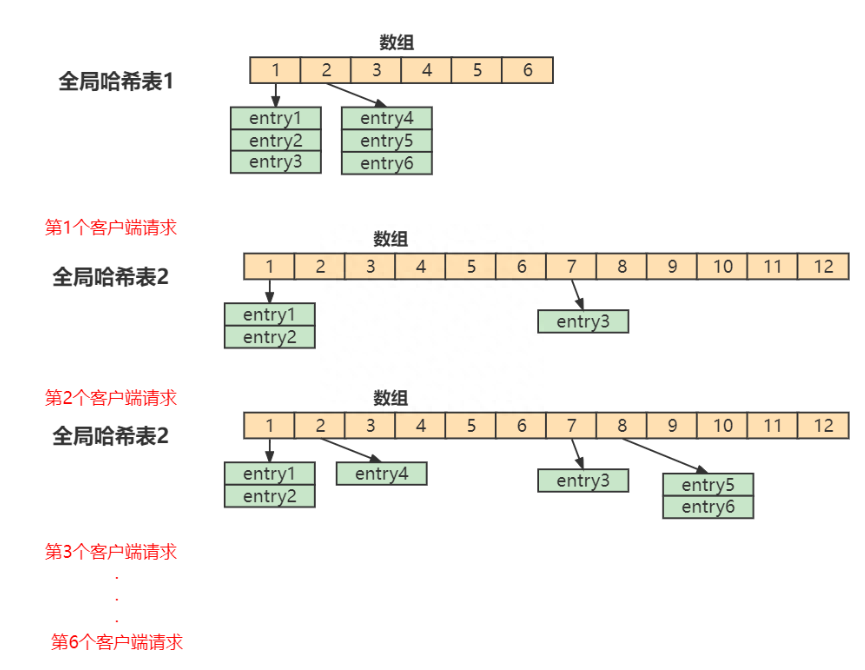
Hello,今天我们来实现一下数组栈,学完这个我们又更进一步了。
一、栈
栈的概念
栈是一种特殊的线性表,它只允许在固定的一端进行插入和删除元素的操作。
进行数据的插入和删除只在栈顶实现,另一端就是栈底。
栈的元素是后进先出。
压栈:栈的数据进入就是压栈
出栈:栈的数据删除就叫出栈
我们画一个原理图让大家比较好理解一下。
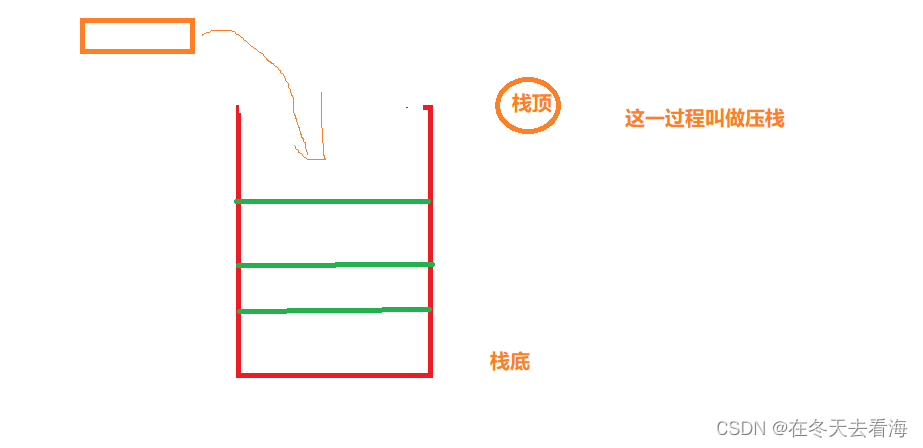
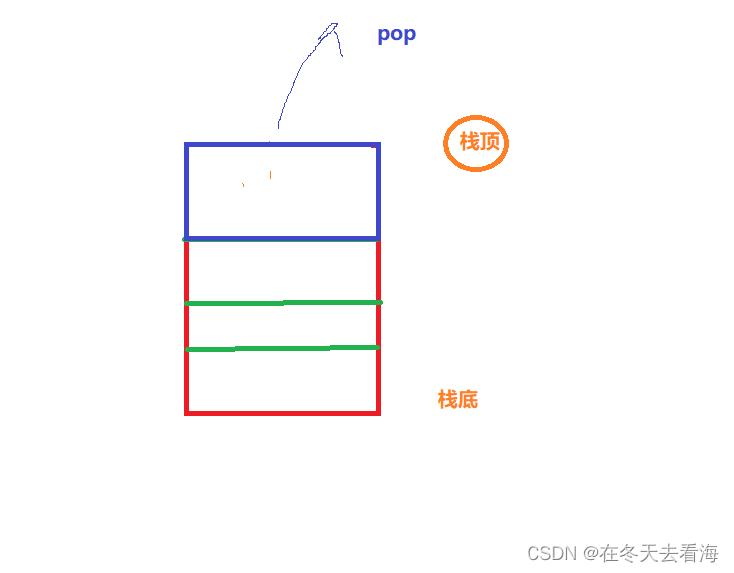
这一过程叫做pop出栈
我们上述的过程都是在栈顶实现出栈入栈,并不能像顺序表和单链表那样从任意位置删除和增加,但这就是栈的性质,我们后面会讲它的作用。
实现栈我们可以用链表产生节点的方式链接他们,但是也可以用数组下标访问的方式,类似顺序表这样的方法
那这两个方法哪个好呢,我们来比较一下。
因为栈的性质我们不得从栈顶出栈和入栈,如果我们实现的时候是链表的方式,那必然会存在一个问题,就是我们的时间复杂度是O(N)我们需要遍历一遍数组,这样的话栈好像变得“土”,所以用数组的方式更快的提高效率,
二、栈的定义
typedef int StackDataType;
#define N 100
struct Stack
{
StackDataType arry[N];
StackDataType top;
};
这是静态栈,在顺序表的时候我们就讲过静态栈存在缺点,最大的缺点就是不能开辟空间,100个最多只能存100个数据,如果我只使用10个int空间就存在浪费了,如果我要存储1000个数据,我们的空间又不够了,这就会造成一系列问题,所以我们改一下,变成动态栈,我们来实现一下吧。
typedef int StackDataType;
typedef struct Stack
{
StackDataType* arry;
int top;
int capacity;
}Stack;
有了结构体还是老样子,我们来实现一下接口函数,开整!
初始化栈
void StackInit(Stack* pst)
{
assert(pst);
pst->arry = NULL;
pst->capacity = pst->top = 0;
}
初始化栈这个大家肯定会了。
销毁
void StackDestory(Stack* pst)
{
assert(pst);
free(pst->arry);
pst->capacity = pst->top = 0;
}
判断栈是否为空
bool StackEmpty(Stack* pst)
{
assert(pst);
return pst->top == 0;
}
现在我们要实现一个入栈的方法,入栈的时候我们需要检查一下我们的内存空间是不是满了,和顺序表一样的道理,如果满了我们就需要扩容。所以在入栈的时候需要判断一下它空间有没有满。
void StackPush(Stack* pst, StackDataType x)
{
assert(pst);
if (pst->capacity == pst->top)
{
int newcapacity = pst->capacity == 0 ? 4 : pst->capacity * 2;
StackDataType* tmp = (StackDataType*)realloc(pst->arry, sizeof(int) * newcapacity);
if (tmp == NULL)
{
printf("realloc fail\n");
exit(-1);
}
pst->arry = tmp;
pst->capacity = newcapacity;
}
pst->arry[pst->top - 1] = x;
pst->top++;
}
这和我们顺序表的尾插一摸一样,现在看大家肯定觉得简单很多了。
有了入栈,那就有出栈。
void StackPop(Stack* pst)
{
assert(pst);
if (pst->top > 0)
{
pst->top--;
}
}
因为我们上面写了一个判断该数是不是为空我们也可以写成
void StackPop(Stack* pst)
{
assert(pst);
if (!StackEmpty(pst))
{
pst->top--;
}
}
返回栈顶数据
StackDataType StackTop(Stack* pst)
{
assert(pst);
return pst->arry[pst->top - 1];
}
统计栈里有多少数
int StackSize(Stack* pst)
{
assert(pst);
return pst->top;
}
完整代码
#pragma once
#include<stdio.h>
#include<assert.h>
#include<stdlib.h>
#include<stdbool.h>
//typedef int StackDataType;
//#define N 100
//struct Stack
//{
// StackDataType arry[N];
// StackDataType top;
//};
typedef int StackDataType;
typedef struct Stack
{
StackDataType* arry;
int top;
int capacity;
}Stack;
void StackInit(Stack* pst);
void StackDestory(Stack* pst);
bool StackEmpty(Stack* pst);
void StackPush(Stack* pst, StackDataType x);
void StackPop(Stack* pst);
StackDataType StackTop(Stack* pst);
int StackSize(Stack* pst);
#include"Stack.h"
void StackInit(Stack* pst)
{
assert(pst);
pst->arry = NULL;
pst->capacity = pst->top = 0;
}
void StackDestory(Stack* pst)
{
assert(pst);
free(pst->arry);
pst->capacity = pst->top = 0;
}
bool StackEmpty(Stack* pst)
{
assert(pst);
return pst->top == 0;
}
void StackPush(Stack* pst, StackDataType x)
{
assert(pst);
if (pst->capacity == pst->top)
{
int newcapacity = pst->capacity == 0 ? 4 : pst->capacity * 2;
StackDataType* tmp = (StackDataType*)realloc(pst->arry, sizeof(int) * newcapacity);
if (tmp == NULL)
{
printf("realloc fail\n");
exit(-1);
}
pst->arry = tmp;
pst->capacity = newcapacity;
}
pst->arry[pst->top - 1] = x;
pst->top++;
}
void StackPop(Stack* pst)
{
assert(pst);
if (pst->top > 0)
{
pst->top--;
}
}
void StackPop(Stack* pst)
{
assert(pst);
if (!StackEmpty(pst))
{
pst->top--;
}
}
StackDataType StackTop(Stack* pst)
{
assert(pst);
return pst->arry[pst->top - 1];
}
int StackSize(Stack* pst)
{
assert(pst);
return pst->top;
}
栈的应用也有很多,后面会分享给大家,我们下次再见

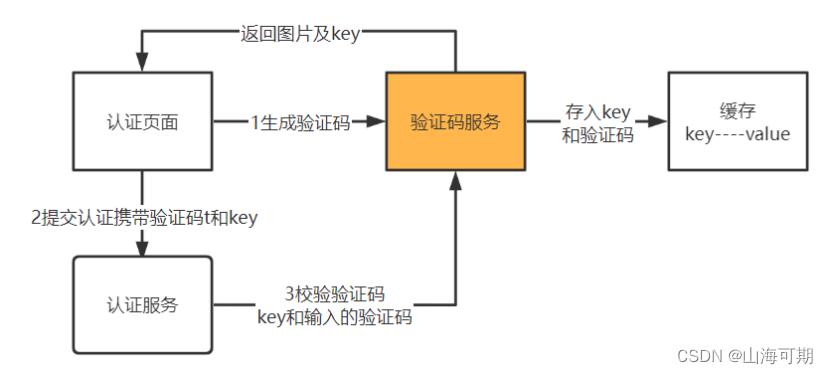

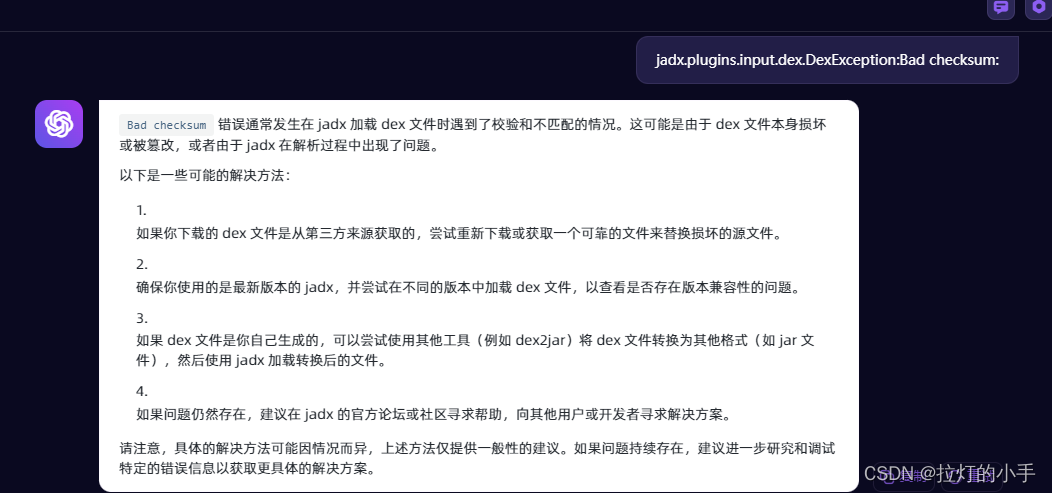
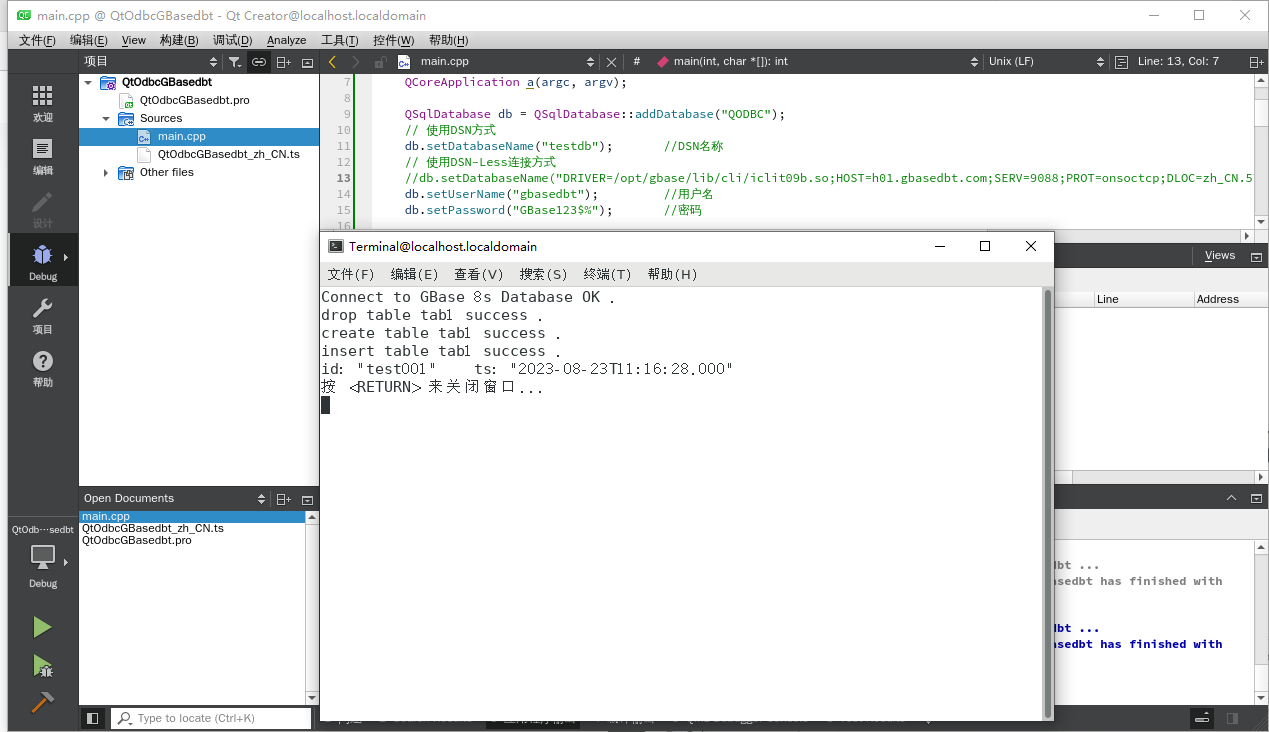


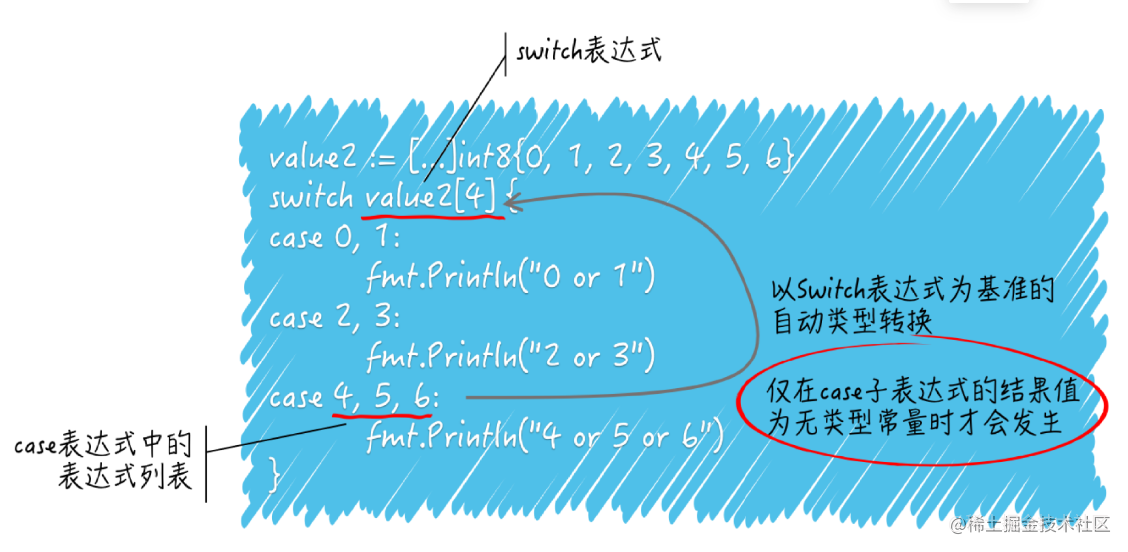




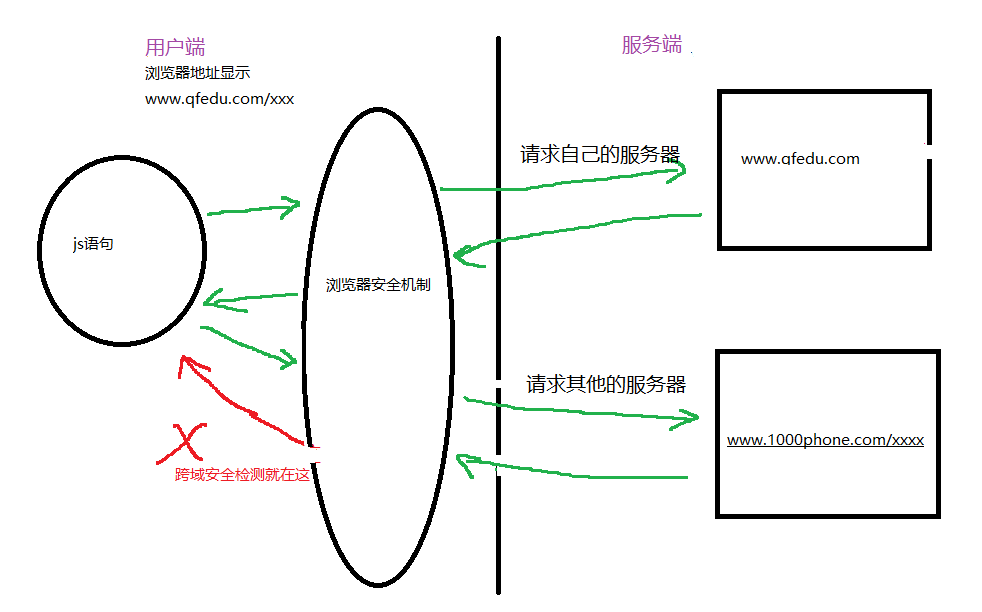
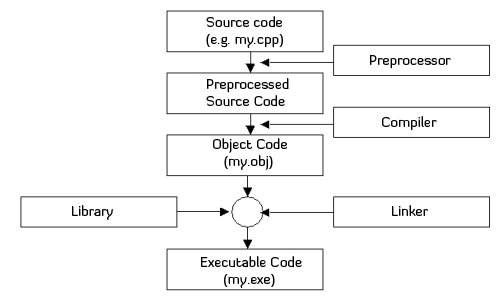
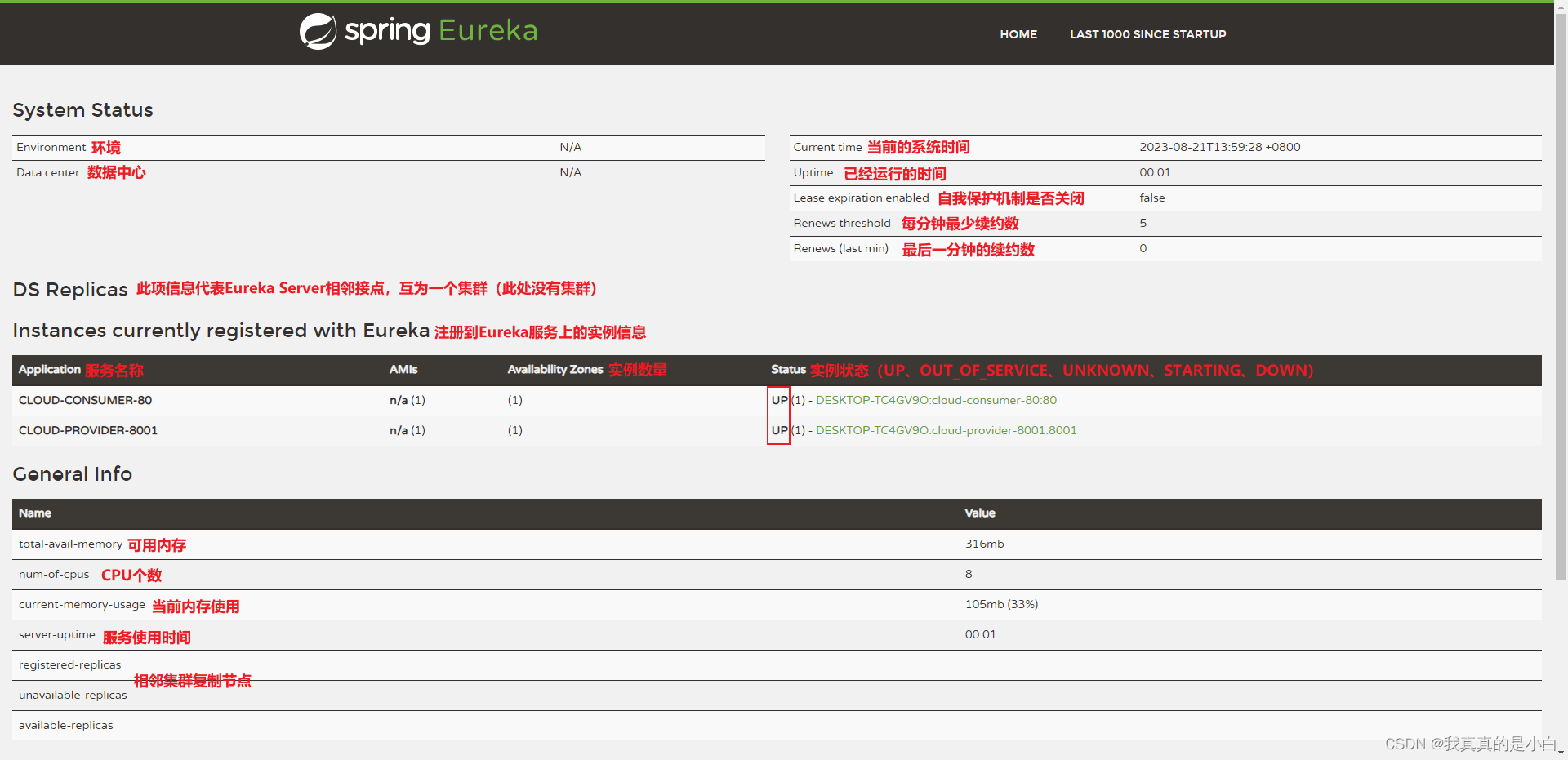

![[管理与领导-49]:IT基层管理者 - 8项核心技能 - 4 - 团队激励](https://img-blog.csdnimg.cn/img_convert/f1b7ae8168218cb0e9b11d6fa23f2fd5.jpeg)
